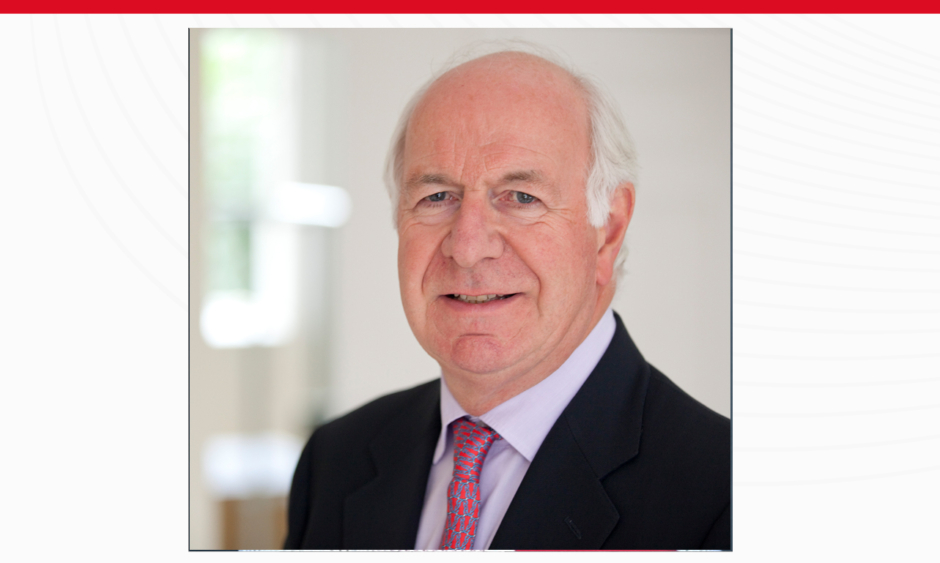Martin O. Savage | Professor Emeritus in Paediatric Endocrinology, William Harvey Research Institute, Barts and the London School of Medicine and Dentistry; Professor of Paediatric Endocrinology, London Clinic Centre for Endocrinology; Professor, Queen Mary University London, UK.
![]()
What led you to pursue a career in paediatric endocrinology, and at this stage in your career what continues to captivate your interest?
I was attracted to paediatric endocrinology as it concerns the whole body, rather than a single organ, and because of the logical nature of its concepts. I started to train in medicine late having secured a place at Magdalene College, Cambridge, UK, to read modern languages; I then changed to natural sciences before studying clinical medicine at St Bartholomew’s Hospital, London, UK. Consequently, original scientific disciplines were a challenge. Endocrinology has a rational and logical progression with changes and mechanisms identifiable through varying biological pathways. This appealed to me.
I am still captivated by the disciplines of clinical assessment linked to genetic analysis for diagnostic accuracy. Clinical skills remain essential, although some geneticists down-play their importance and favour genotyping as the new diagnostic grail. Technology does not work without the human component needed to exploit its power and potential.
Are there any exciting developments on the horizon in the field of phenotype–genotype relationships that you are aware of and classify as particularly noteworthy?
Genetic investigation is still a developing field and in certain areas such as growth and puberty disorders, no clear phenotype–genotype relationships have yet been established.
However, in some areas such as congenital adrenal hyperplasia and multiple endocrine neoplasia, phenotype–genotype relationships are established and genotyping can lead to clear clinical decisions regarding therapy and management. The finding of a mutation of the RET proto-oncogene on chromosome 10 in a child with features of the multiple endocrine neoplasia Type 2B syndrome is a clear indication for prophylactic thyroidectomy before medullary carcinoma of the thyroid becomes established. In disorders of growth hormone (GH) action, mutations in genes encoding key functional proteins have clarified physiological mechanisms. This is a fascinating field of development.
Having lectured in more than 60 countries worldwide, where are the real hotspots in paediatric healthcare that influenced you the most? Which areas do you see leading the charge in provision of novel therapies, for example in the specialty of chronic inflammatory diseases?
I have been very fortunate to lecture in 60 different countries. The range of experience and expertise throughout the world is extremely wide. There is still an important basic need to understand fundamental clinical skills in many countries. But the eagerness to learn is striking. Western countries have the experience and resources to develop and use experimental therapies, and in an academic environment research projects are permitted to proceed and fail if necessary. This element of risk-taking is largely absent in many countries where research is either not practised or poorly developed.
Chronic inflammatory diseases such as malnutrition, sickle cell disease, and thalassaemia are by definition more prevalent in countries with reduced financial resources. The breakthroughs in their management will come through collaboration with wealthier scientific institutions. The most important word in academic activity is ‘collaboration’, allied to the human effort and determination for such collaboration to produce meaningful results.
Your experience researching growth disorders includes publication of the first human case of an IGF-I gene defect in 1996. As a pioneer, were there any challenges or barriers you recall overcoming to showcase this work, and what advice would you give today to a clinician working in uncharted territory or areas with significant gaps in literature?
The child with the IGF-I gene defect was referred to our group because of our declared interest in disorders of GH action. I was very fortunate to be able to collaborate with a high-quality molecular biologist, Adrian Clark. The child had a precise phenotype, i.e., low birth weight, short stature, microcephaly, deafness, and precise biochemical determinations suggested a defect of the IGF-I gene. Collaboration with Clark led to sequencing of the IGF-I gene that demonstrated deletions of exons 4 and 5. This was a classic example of the combination of clinical assessment, biochemical determination, and genetic sequencing leading to the discovery of a new human disorder.
My advice to a clinician working in uncharted territory would be to use meticulous clinical assessment techniques, and to find a talented molecular scientist who is equally interested in the clinical field, whether it be growth disorders or abnormal puberty. Collaborations are most successful and enjoyable when friendship and mutual trust develops between the two or three key investigators.
As an educator, where can we expect to see your focus lie in the coming years? Are there any particular areas that you would encourage younger clinicians to research?
Education remains an enormous challenge, largely because its effects are difficult to measure quantitatively. In terms of teaching, my commitment is essentially towards clinical skills and diagnostic guidelines in basic endocrine disorders such as growth and puberty in broad terms. I am inspired and fascinated by working in different cultures. Within the speciality of paediatric endocrinology, which fortunately is very broad, I would advise a young doctor to develop an interest in particular in growth disorders, abnormalities of puberty, and adrenal disorders to name a few. A higher degree such as a laboratory-based PhD is a key step in acquisition of research skills for the future.
What do you consider your greatest achievement from your involvement as General Secretary of the European Society for Paediatric Endocrinology (ESPE)?
ESPE was founded in 1962, when the first Annual Meeting was held in Zurich, Switzerland, with 30 founding members attending, led by Andrea Prader of the Kinderspital. During its first years, it had the aura of a somewhat exclusive club with a constitution describing distinct administrative barriers to membership, and the precise geographical restriction of European countries or those bounded by the Mediterranean having access to membership. When I became secretary in 1997, paediatric endocrinology was a growing paediatric sub-specialty and the annual ESPE meetings had grown in size to several hundred delegates, yet membership was still relatively restricted. There was clearly a mismatch between the demand for membership and the availability of positions. The constitution needed changing and support from the voting membership was necessary to do this. Delegates from outside the geographical boundaries were aiding the financial viability of the society and also contributing scientifically to the annual meetings. A change in the constitution, removing geographical barriers and allowing easier applications for membership, resulted in the growth of ESPE and led to the open, successful, global society it is today.
How have you contributed most to the increased awareness of growth disorders, and particularly Cushing’s syndrome?
Publications are essential for an academic unit to become successful. As an arts graduate manqué, I have been fortunate in being able to write, and to enjoy writing. Communication skills in lecturing together with the adoption of a specific area of interest such as GH resistance offered opportunities to establish the reputation of the unit as one committed to the diagnosis and treatment of growth disorders. The recruitment of highly skilled junior and senior staff helped enormously, as our publications and lectures were appreciated in the highest quality scientific meetings. The unit at St Bartholomew’s Hospital, London, UK, was never large, but a relatively small number of committed clinicians and scientists worked for each other and when success came, such as with the New England Journal of Medicine (NEJM) publication of the IGF-I gene defect in 1996, enthusiasm was redoubled and helped build the momentum of a successful department.
Our interest in paediatric Cushing’s syndrome stemmed from one fundamental advantage: that of working with a world-class department of Adult Endocrinology at St Bartholomew’s Hospital led by Michael Besser. I was attracted to work there for this reason, and the advantages were enormous compared to working in an isolated children’s hospital. The adult department had world-wide expertise in Cushing’s syndrome and our interest in paediatric Cushing’s resulted in referrals of children. Again, our reputation stems directly from amicable and productive collaboration between paediatric and adult specialists.
How have you contributed most to the increased awareness of growth disorders, and particularly Cushing’s syndrome?
Publications are essential for an academic unit to become successful. As an arts graduate manqué, I have been fortunate in being able to write, and to enjoy writing. Communication skills in lecturing together with the adoption of a specific area of interest such as GH resistance offered opportunities to establish the reputation of the unit as one committed to the diagnosis and treatment of growth disorders. The recruitment of highly skilled junior and senior staff helped enormously, as our publications and lectures were appreciated in the highest quality scientific meetings. The unit at St Bartholomew’s Hospital, London, UK, was never large, but a relatively small number of committed clinicians and scientists worked for each other and when success came, such as with the New England Journal of Medicine (NEJM) publication of the IGF-I gene defect in 1996, enthusiasm was redoubled and helped build the momentum of a successful department.
Our interest in paediatric Cushing’s syndrome stemmed from one fundamental advantage: that of working with a world-class department of Adult Endocrinology at St Bartholomew’s Hospital led by Michael Besser. I was attracted to work there for this reason, and the advantages were enormous compared to working in an isolated children’s hospital. The adult department had world-wide expertise in Cushing’s syndrome and our interest in paediatric Cushing’s resulted in referrals of children. Again, our reputation stems directly from amicable and productive collaboration between paediatric and adult specialists.
What are the most significant changes you have witnessed in the field of paediatric endocrinology over the course of your career?
The biggest change must be the emergence of molecular science as a diagnostic discipline that is now widely available to clinicians. This change occurred in the 1980s. One of the most dramatic examples is the disorder of classical GH resistance, known as Laron syndrome, after Zvi Laron, Tel Aviv, Israel, who first described it in 1966. The phenotype is striking, with extreme short stature with most parents being consanguineous. The first human GH assay was published in 1963 and Laron, who had experience with this disorder from 1958, demonstrated that three affected siblings had high serum GH values, rather than low values which the phenotype resembling hypopituitarism would suggest. Consequently, Laron syndrome became known to paediatric endocrinologists around the world as a probable genetic disorder, but of unknown aetiology. It was in 1989 that the first homozygous mutations of the GH receptor were identified. Candidate gene sequencing had demonstrated the causative defect and established the key role of the GH receptor in the regulation of human linear growth.








